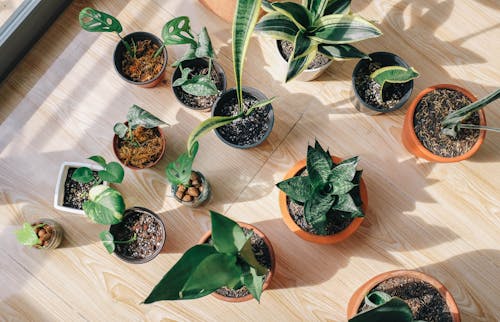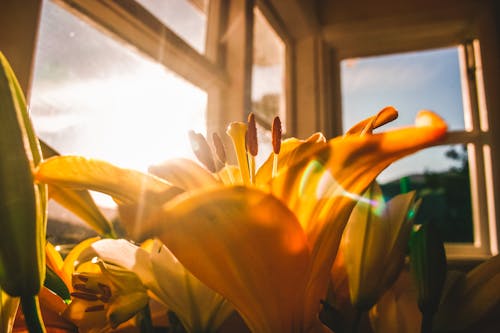Soil, water and lots of green are nature’s best gifts and working with them not only is good for mental health, but also a good boredom buster for kids who have been stuck indoors for a long period of time. Gardening is a very healthy activity and can encourage parent-child bonding, also opens doors to creativity and imaginative thinking in kids, and develops a sense of responsibility and nurturing.
 There are many ways to create small green spaces within the house. Depending upon the size and area available, there are many options and many designs to work with. So come on mums and dads, roll your sleeves up, get your hands and (little ones’ hands) in some dirt, and bring some nature to your living room(s)!
There are many ways to create small green spaces within the house. Depending upon the size and area available, there are many options and many designs to work with. So come on mums and dads, roll your sleeves up, get your hands and (little ones’ hands) in some dirt, and bring some nature to your living room(s)!
Also Read: 10 Everyday Chores so that Your Kids Learn Basic Discipline
1- A Cacti Garden
 Cacti are included in the category of ‘succulents’ and there are many benefits of having succulents around your house. Easy to take care of and drought-resistant, it is a good choice of plants with your little ones around. One great idea is to have your kid name each cactus and be in charge of each one. This will encourage them to love and own the plants and develop a strong sense of responsibility.
Cacti are included in the category of ‘succulents’ and there are many benefits of having succulents around your house. Easy to take care of and drought-resistant, it is a good choice of plants with your little ones around. One great idea is to have your kid name each cactus and be in charge of each one. This will encourage them to love and own the plants and develop a strong sense of responsibility.
Also Read: You should stop saying these 6 things to your kids.
2-Terracotta Flowering Pots
 If you can find a sunny spot in your house, you can place many terracotta pots with different flowers planted in them. Before planting, you can get your kids to get crafty by painting and decorating the pots according to their taste. Get them acrylic paints, glue, stickers, and all other craft supplies, and let them be creative. Later, plant flowering plants or just green plants in the pots and put it in an area where it catches the eye. Not only is it a good time pass for kids, but also, the additional splash of color from painted pots will add life to your room.
If you can find a sunny spot in your house, you can place many terracotta pots with different flowers planted in them. Before planting, you can get your kids to get crafty by painting and decorating the pots according to their taste. Get them acrylic paints, glue, stickers, and all other craft supplies, and let them be creative. Later, plant flowering plants or just green plants in the pots and put it in an area where it catches the eye. Not only is it a good time pass for kids, but also, the additional splash of color from painted pots will add life to your room.
Also, Read: Heavily marketed kids’ cereals are least healthy
3-Vegetable Garden
 This is a great way to spark excitement in those little minds as they discover that a vegetable can be grown from the remains! You can use vegetable scraps, especially green leafy ones like celery, or romaine lettuce. Cutaway the head portion and place it in a saucer or a tray of water. Refresh the water regularly, and soon you can see new budding leaves.
This is a great way to spark excitement in those little minds as they discover that a vegetable can be grown from the remains! You can use vegetable scraps, especially green leafy ones like celery, or romaine lettuce. Cutaway the head portion and place it in a saucer or a tray of water. Refresh the water regularly, and soon you can see new budding leaves.
4-Flowers and Fairies
 Add some magic to your indoor spaces by creating an enchanting fairy garden. For this, you will need a big pot filled with soil. Use decorative stones, green plants, and small figurines to create a magical look. You can add small fairy lights, that can make it look more dreamy and enchanting.
Add some magic to your indoor spaces by creating an enchanting fairy garden. For this, you will need a big pot filled with soil. Use decorative stones, green plants, and small figurines to create a magical look. You can add small fairy lights, that can make it look more dreamy and enchanting.
5-Vertical Garden
 If the space in your house does not allow you to install the greens, a vertical garden is an answer! There are plenty of ways to create vertically hanging gardens that can be looked after easily. Be it in the kitchen or your balcony wall, vertical gardens are easy to create and add beauty to space.
If the space in your house does not allow you to install the greens, a vertical garden is an answer! There are plenty of ways to create vertically hanging gardens that can be looked after easily. Be it in the kitchen or your balcony wall, vertical gardens are easy to create and add beauty to space.
6-Terrarium – fancy word for plants in a jar!
 Just how an aquarium catches one’s eye, a terrarium, that is just a glass jar with an ecosystem will add vibrancy to your room. You can fill up rounded glass jars, with stones and small plants like mosses and ferns and a lovely looking portable garden is all set for you and your kids to look and enjoy!
Just how an aquarium catches one’s eye, a terrarium, that is just a glass jar with an ecosystem will add vibrancy to your room. You can fill up rounded glass jars, with stones and small plants like mosses and ferns and a lovely looking portable garden is all set for you and your kids to look and enjoy!
7-Utilising Dead Spaces
 Bring to life dead spaces in your house that cannot be utilized in any other way. For example, the area under the staircase, or any dead corner in the living room. Fill it up with different potted and climbing plants. Let your kids play an important part in deciding the corner, choosing the plants, watering them, and cleaning up any messes. With all these great tips and some more research, get your kids to explore the world of nature and arts, and while you enjoy, don’t forget to click some really good photos that will be a memory for a lifetime!
Bring to life dead spaces in your house that cannot be utilized in any other way. For example, the area under the staircase, or any dead corner in the living room. Fill it up with different potted and climbing plants. Let your kids play an important part in deciding the corner, choosing the plants, watering them, and cleaning up any messes. With all these great tips and some more research, get your kids to explore the world of nature and arts, and while you enjoy, don’t forget to click some really good photos that will be a memory for a lifetime!
You May Like:
8 Foods You Shouldn’t Feed Your Children so that they Remain Healthy
According to studies, it is found that young children suffer from various diseases, one of the prominent being infant botulism, caused by a special type of bacteria that occurs in honey. Such infections at a tender age make their immune system receive a major setback. There are many food items which we as adults may find completely normal and feed to our children. But that is what goes wrong. After carefully analyzing these are some food items that you should not be feeding your child. Read More:


